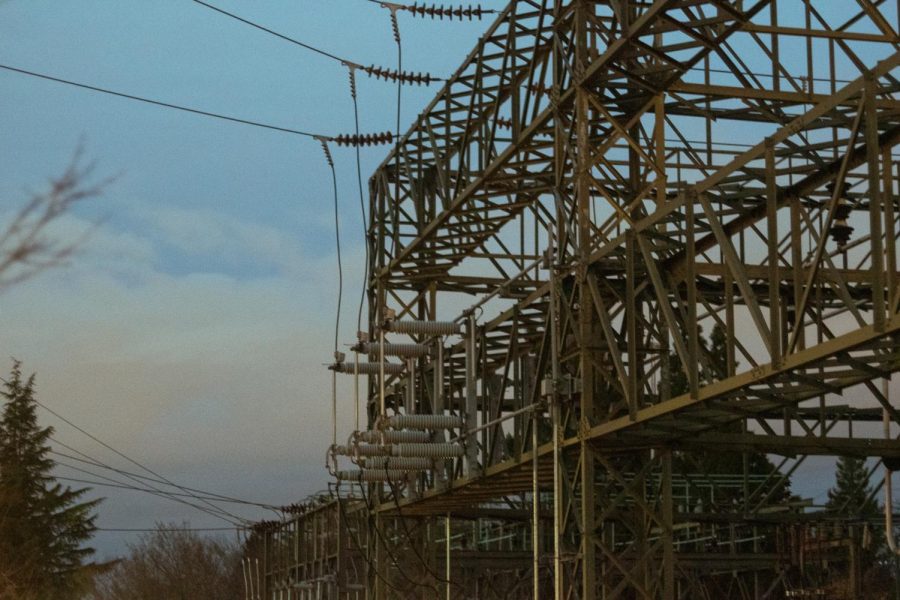How Decentralizing the Energy Sector Can Combat Climate Change
Reshaping the nation’s power grid is an opportunity to shift to renewable energy sources that will benefit citizens and the planet.
Microgrids are a promising alternative to the vulnerable grid that we have today.
January 12, 2022
Despite the empty promises of governments and corporations the world over, the power sector is still expected to emit record-breaking levels of CO2.
After all of the attention on the issue and the massive amounts of money spent to reduce emissions and create renewable energy, why is there no tangible progress in the power sector?
The answer is capitalism.
Under capitalism, the issue that relates to the climate crisis specifically is extractivism. The term refers to an economic model that consists of harvesting materials or natural resources from the earth and selling them to make a profit.
In her book, “This Changes Everything: Capitalism vs The Climate,” Naomi Klein describes extractivism as a “nonreciprocal, dominance-based relationship with the earth, one purely of taking,” she said. “It is the opposite of stewardship, which involves taking but also taking care that regeneration and future life continue.”
The formula is simple: extract and profit. No thought goes into the repercussions of extracting endlessly.
In order to stop the destruction of the planet, the concept of extractivism needs to be abandoned on a global scale and replaced with stewardship. But before large-scale shifts can happen, there have to be smaller reforms — powered by the people.
There are numerous climate change-caused natural disasters. The implications of these destructive and fatal events are made even worse by the instability of the nation’s power grid.
The power grid in the U.S. is outdated.
Some parts of the “largest machine in the world” haven’t been replaced or updated since the 1940s. Regardless of the increasing climate disasters of the last decade, the grid is crumbling.
The danger intensifies when the power grid is ravaged by disasters. Across the nation, increased blackouts are occurring because of unusual temperatures, hurricanes, and wildfires.
The vulnerability of the nation’s grid has manifested right in our backyard. During the heatwaves of summer 2021, over 6,300 lost power in the Portland area due to the record-breaking temperature.
In Texas in February 2021, the entire state’s power grid was in danger after Texans’ thermostats were increased and energy sources failed after extreme winter weather decimated the state. This was extremely dangerous because Texas’ power grid operates completely independent of the other two main parts of the U.S.’s grid.
The reason that the storms in Texas were so consequential is because Texas itself is one of the three main grids in the U.S., with no other way of accessing power from other parts of the main grid. The reason Texas gets its power this way is to avoid federal regulation by not crossing state lines.
When natural gas pipelines froze, and wind turbines that had not been winterized froze over and failed to spin in February, the Electric Reliability Corporation of Texas (ERCOT) was forced to go through emergency procedures and reduce power to Texans. Eventually, the grid reached dangerously low frequency that had the ability to cause damage that had the ability to result in the collapse of the entire grid.
Storms like the one in Texas prove the danger that the power grid holds. Disasters like this one reveal “how dangerous it is to be dependent on centralized forms of energy that can be knocked out in one blow,” said Klein.
Texas was knocked out in one blow.
Over 150 people died because there was no way of accessing power from other states and because ERCOT and power companies failed to prepare for the storms.
It is clear that the way the U.S. power grid functions is not suitable for the nation, especially in a time of climate disasters.
But what would work instead?
Microgrids are a promising alternative to the vulnerable system that we have today. According to the Department of Energy, “A microgrid is a local energy grid with control capability, which means it can disconnect from the traditional grid and operate autonomously.”
Microgrids are less vulnerable to disasters such as the Texas storms because there are not millions of people relying on one, centralized source of power. When grids operate independently on a smaller scale — such as individual grids supplying electricity to neighborhoods or counties — while still having the ability to draw power from other sources, it makes for a much safer and reliable system. If a disaster decimates a microgrid, the effects would be much less dangerous than if something were to happen to the main grid.
Microgrids become even more beneficial when they are powered by renewable energy.
Not only is the power grid in the U.S. unreliable, it is also still responsible for a significant portion of emissions, with 60% of electricity generated by fossil fuels, contributing to greenhouse gas emissions that create a variety of climate-related problems.
US Electricity Generation by Energy Source
Source: U.S. Energy Information Administration
Even though climate disasters are taking lives, there is still significant resistance to switching the power grid to renewable energy.
Some of the resistance comes from a lack of transparency with the public and exclusion of citizens. Klein uses the example of wind turbines to demonstrate how opinions on renewables are shaped when ordinary people have no say in the process. “When communities are excluded in this way, there is a very good chance that they will rebel against the noise and ‘unsightliness’ of wind turbines, or the threats — some real, some imagined — to wildlife and ecosystems posed by solar arrays,” Klein said. This kind of thinking is referred to as “Not In My Backyard-ism.”
Unlike the United States, Denmark has embraced alternatives to fossil fuels. In 2019, almost half of their energy came from wind farms. The key to their success was not corporate-owned wind farms — it was small, locally-owned wind farms that contributed to the country’s accomplishment.
In 2000, the Middelgrunden wind farm — the world’s largest at the time — was built, but only with the help of the citizens of Denmark. 8,500 people raised half of the project’s budget, and 50,000 local citizens aided in planning the project. Private investors have a 50% stake in the project’s revenues.
The reason that this type of decentralized model is so appealing to citizens is that not only are they protecting the environment, they are also actively profiting from the projects. It is the very opposite of extractivism; creating opportunities for people to have a better life while also preserving the natural world.
Preben Maegaard, former President of the World Wind Energy Association, advocates for the decentralized model of wind farms. “When local people own the wind farms and share in the benefits, they will support them,” he said. “It won’t be NIMBY (Not In My Back Yard), it will be POOL (Please On Our Land).”
Now is the time to make similar changes and pave the way toward a cleaner future that will simultaneously benefit individuals in our communities. We have the power to change the United States’ grid into one that is powered by renewable energy co-ops that benefit both the people and the planet.







Mr. Krantz • Jan 13, 2022 at 3:30 pm
This is a terrific article, Elsie. I really appreciate the work you put into writing this piece; it shows!
G. Lefranc • Jan 12, 2022 at 10:41 pm
This is such an important topic and good information for all to read. If citizens put a lot of pressure on government and private industries to reduce/eliminate fossil fuel consumption, change can happen. Great work on this article